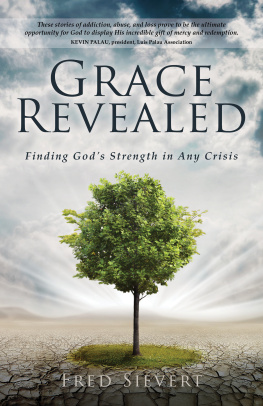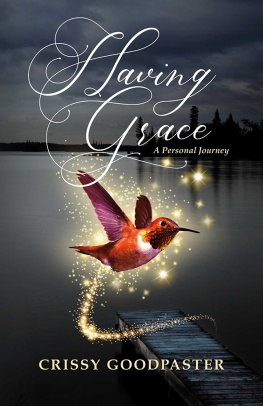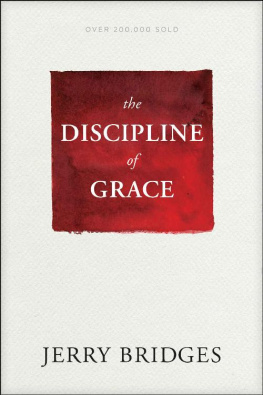O n the eve of the weddings of my three children I gave each of them a photo album as a wedding gift. At first glance it would seem that the albums consisted of little more than a random collection of photos, each photo capturing a fleeting moment in their lives. But as you can probably guess, the albums, containing perhaps a hundred photos, tell the story of how the children grew and changed between birth and marriage. A narrative thread runs through each one.
Story is the theme of this book. God has written and played the key role in the story of salvation, which promises to redeem our stories mending what is broken, healing what is sick, making right what has gone so wrong. This glorious story of redemption turns on the work of Jesus Christ, the Son of God and Savior of the world, who came into this world to make us new, which he accomplished through his life, death, and resurrection. It is all his doing, a gift of pure grace. But we must receive this gift and make it our own, like children growing into adults. Redemption means becoming the new persons we already are in Jesus Christ. In fact, we can become new in Christ because we already are new in Christ.
If you have glanced at the Table of Contents, you have already noticed that I take the theme of story quite literally. The chapter titles make that clear enough: Characters in Search of a Story, A Story in Search of Characters, Scene and Setting, Plot, and Author. I realized early on that I could not write a book about story if I were not true to its very nature, for all stories include characters, scene and setting, plot, author, and the like. This is true of the biblical story; it is equally true of yours and mine. The organization of the book, therefore, reflects this theme.
I also realized that I could hardly write a book about the redemptive story if I did not tell stories along the way. Here I faced a choice. Books of this kind tend to string together a series of disconnected anecdotes and quotes that illustrate the various theological points made along the way. The theology unites the book, not the stories. But I wondered if that was the right literary strategy to follow in a book about story, for it would seem to undermine the very point I was trying to make. I decided, therefore, to use one story as an illustration of the story, in order to show how our human stories fit into the redemptive story. Once I made this decision, I thought it best to use the one story with which I am most familiar, namely, my own.
You will notice along the way, therefore, that I reflect on my story really, my familys story as it was unfolding during the writing of the book. On several occasions I refer to my daughter Catherine as being pregnant; she has since given birth. My first grandchild, Gideon, was born just a few weeks ago. Continual change is the nature of story itself, which I try to capture in the book.
Still, this book is not a memoir. It tells my family story, but only to explain and explore the theme of redemption. I invite you to read this book with your story in mind, not mine. The story of redemption is like no other, for it promises to envelop and transform all other stories, however sensational or mundane, tragic or happy. I see myself as a witness to this truth: God redeems our stories through his. If you dare to surrender yourself to God, he will take up the story of your life and integrate it into the great story of salvation, turning it into something so extraordinary that you will be tempted to think that it was all a beautiful dream.
CHAPTER 1
Weathered and Beautiful
I n 2006, my kids and I took a family vacation to Banff National Park, located in the Canadian Rockies. We hiked some forty miles in five days, exploring many of the great features of this magnificent park. Along the way, we kept noticing a certain kind of pine tree, the white bark pine, dotting the landscape, especially at higher elevations. Clinging to rocky cliffs overlooking pristine lakes, massive glaciers, and deep valleys, they looked like sentinels keeping watch over the world. Each one was obviously weathered trunks gnarled; limbs broken off; bark roughed up by wind, rain, sleet, and snow; clumps of needles stealing bits of sunlight; clawlike roots gripping rocky slopes. These trees had passed the test of time and survived, sculpted by the elements into extraordinary works of art. They were truly beautiful not beautiful like a childs innocent and delicate face, but beautiful like the carved and aged face of a lifelong fisherman or farmer. These trees were strong and seasoned, full of years and memory and character.
E XTRAORDINARY B EAUTY
Those trees symbolize what I believe God wants to accomplish in our lives, which is to work complete redemption. He wants to use the harsh conditions of life to shape us and eventually the whole world into something extraordinarily beautiful. Redemption promises to transform us, completely so. Once broken, we become whole again; once selfish and insecure, we become stately and serene and self-giving; once rabid sinners, we become glorious saints. In short, God purposes to claim us as his own no matter how far we are from him, how fallen into sin, how lost and lonely. He wants to restore us to a right relationship with him and to remake us according to the image of Jesus Christ, which will ultimately lead to the renewal of the whole world. This is Gods doing, from beginning to end. God is the one the only one who can, does, and will work redemption.
Redemption has become significant to me, and for very personal reasons, as I will soon explain. It is a biblical term, too. But like other biblical terms, such as justification, reconciliation, and atonement, it seems alien and even intimidating to us, the religious equivalent of an algebraic equation. We dont use the term much in regular speech, and we dont usually ask people, Hows your redemption going? which would make us appear insufferably religious and weird. The word might occupy a place in our religious vocabulary, useful to toss around at church or in a Bible study, but it hardly seems relevant to daily life.
I want to reclaim the word and make it understandable, useful, and meaningful for ordinary life. It is a rich term, and it captures the entire scope and drama of the biblical story, which is redemptive at its core. I hope to define and explain the term in such a familiar and practical way that it will make a genuine difference in your life. This is the goal set before me.
But I need something from you, too, which I am going to ask for up front. I want you to read this book with your own life in mind, your ordinary life, the real life you are currently living, whether you are young or old; single, married, divorced, or widowed; employed, unemployed, or retired; rooted in a community or profoundly lonely; satisfied with your circumstances or disappointed with them; elated about life or discontented, restless, even depressed. Redemption is the work of Jesus Christ applied to the unfolding story of life, your life and my life. It turns gospel truth into a dramatic narrative and makes theology applicable to everyday life. Redemption happens through Gods involvement in the ordinary circumstances of life, no matter what those circumstances happen to be. You are not beyond Gods redemptive reach not now, not ever. So I ask you to read this book in light of your life as it is right now.














